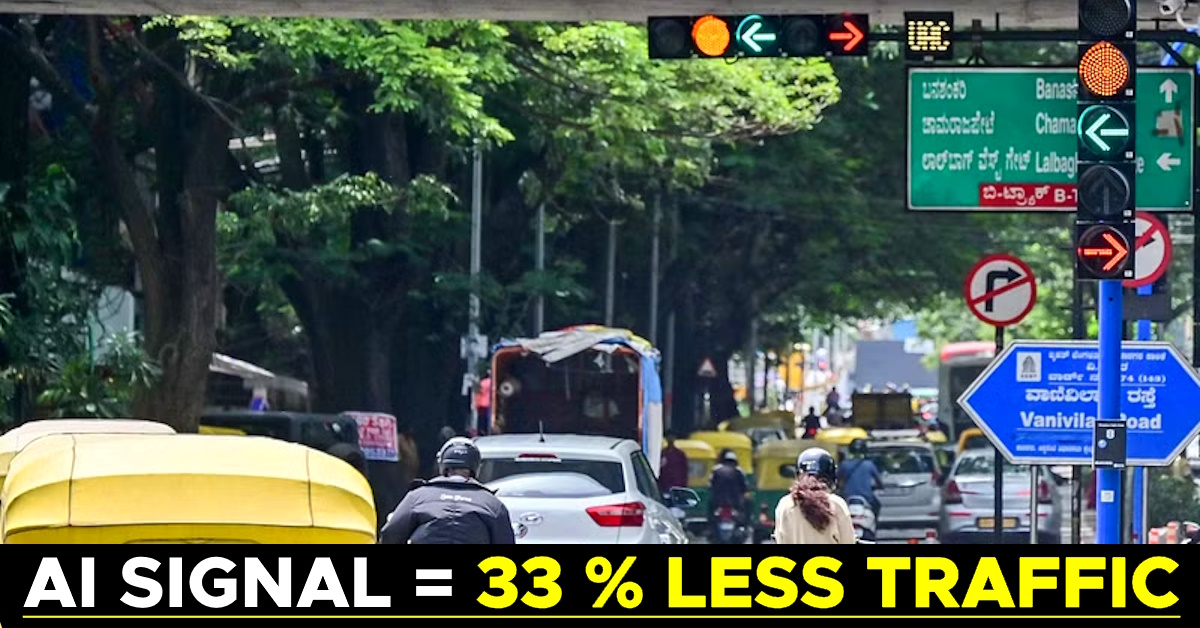Traffic in Bengaluru Down by 33 Percent Where AI Signals Are Operational: Jt Commissioner


The advancements in AI technology have helped many sectors in India as well as the globe. However, one particular area of AI technology application which has given a lot of relief to the people of Bengaluru is traffic signals. Yes, you heard that right. The Bengaluru Adaptive Traffic Control System (BATCS) has been helping in reducing travel time at key junctions of the city, which is known for its dreadful traffic. The installation of new traffic signals at Hudson Circle has reduced vehicle travel time by 33%, according to MN Anucheth, Joint Commissioner of Police (Traffic), Bengaluru.
For those who may not be aware, BATCS, or Bengaluru Adaptive Traffic Control System, is an innovative system that is helping in reducing traffic jams across the city. For this, the system utilizes AI-driven traffic signals to streamline and minimize congestion during peak hours.
The Centre for Development of Advanced Computing (C-DAC) has developed the Composite Signal Control Strategy (CoSiCoSt), which is utilized in BATCS. With the help of this system, traffic signal timings are adjusted dynamically based on the real-time traffic captured by camera sensors.
This innovative system was launched in May 2024, and since then, it has expanded to 60 junctions in Bengaluru city. Additionally, the target for this project is to cover a total of 165 junctions by January. It has also been stated that by March of 2025, this system will be expanded to over 500 junctions.
Here are the details of how this system actually works. It uses vehicle-actuated control during peak hours to automatically adjust signal timings based on traffic density. Presently, this system works 95 percent autonomously; however, for the remaining 5 percent, manual intervention is required for VIP and emergency vehicle movement.
The Bengaluru City authorities are also increasing the number of AI-enabled cameras, which will complement the existing 7,500 CCTV cameras. All of these cameras are connected to a central command centre. This ensures that the police authorities can take prompt action.
Over the last few months, various other states have noted these AI advancements, which can help in better managing traffic. Of all the states, Kerala has already added hundreds of AI-based cameras. All of these have helped in reducing fatalities by 50 percent.
Presently, around 726 high-resolution AI cameras across national and state highways capture violations of speeding and improper lane usage. All of the data collected from these AI cameras is sent to a centralized data centre in Thiruvananthapuram. It is then processed, and all the offenders are issued fines.
Apart from Kerala, Sikkim is also a state where these AI cameras are capturing high-resolution images of speeding vehicles. Even at night, these cameras are proving successful in capturing the registration plates of vehicles that break traffic regulations.
As noted by the example of Bengaluru, Kerala, and Sikkim, the implementation of AI technology in traffic management is proving to be very useful. At this pace, if all the other states of our country start using this innovative technology, road safety will increase exponentially.
The number of traffic violations and fatalities will also reduce drastically. These systems, due to the lack of involvement of humans, are very efficient, and the chances of getting away by bribing will reduce significantly.